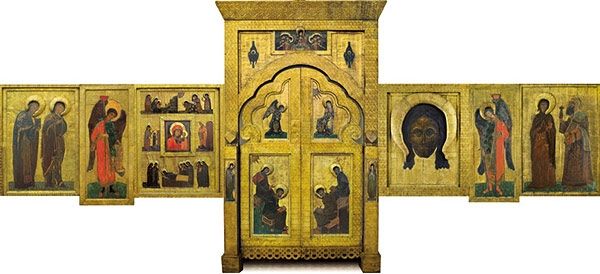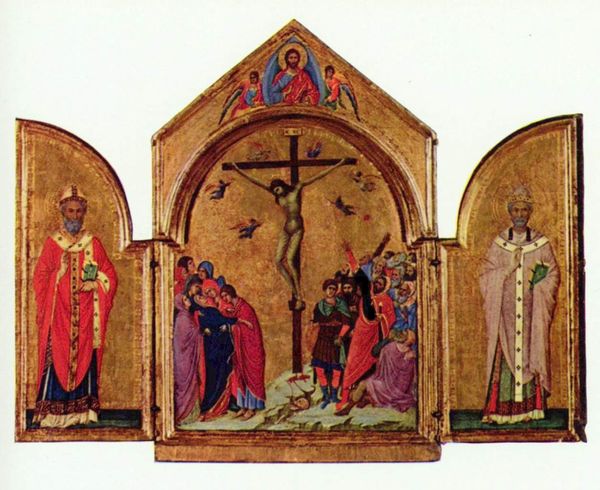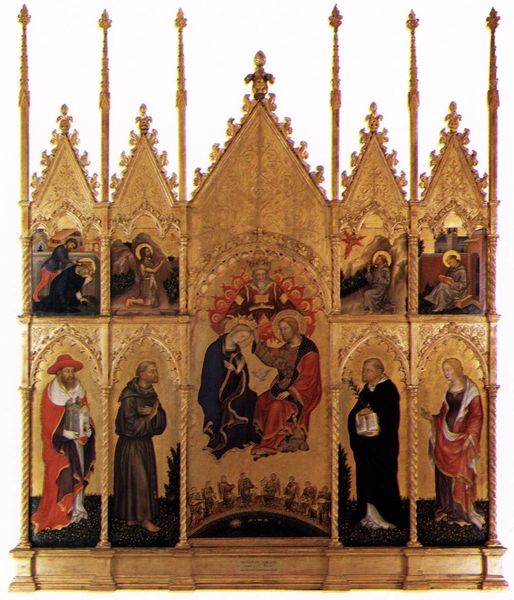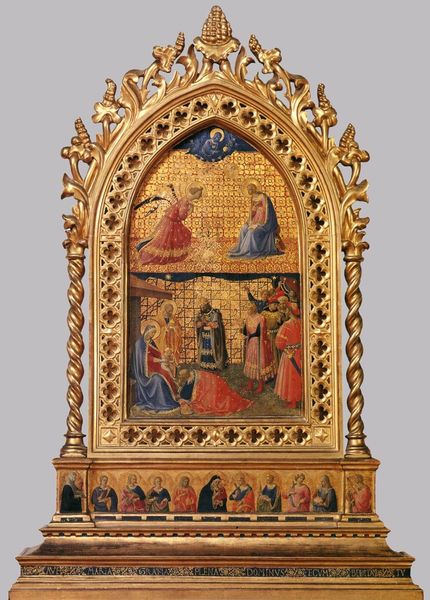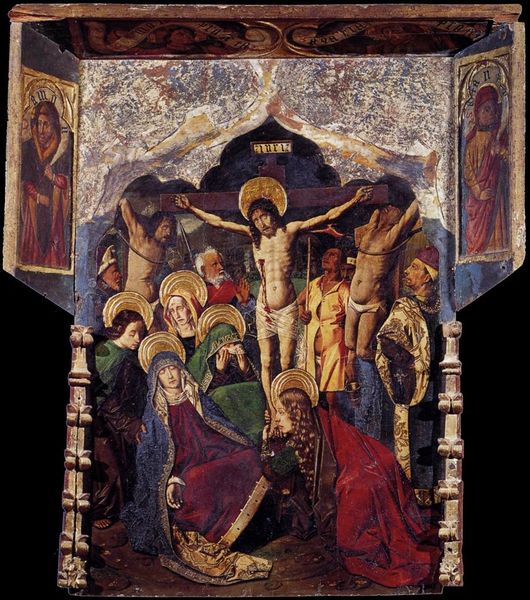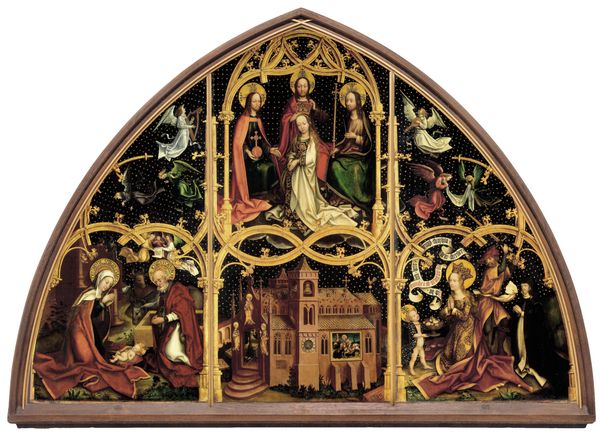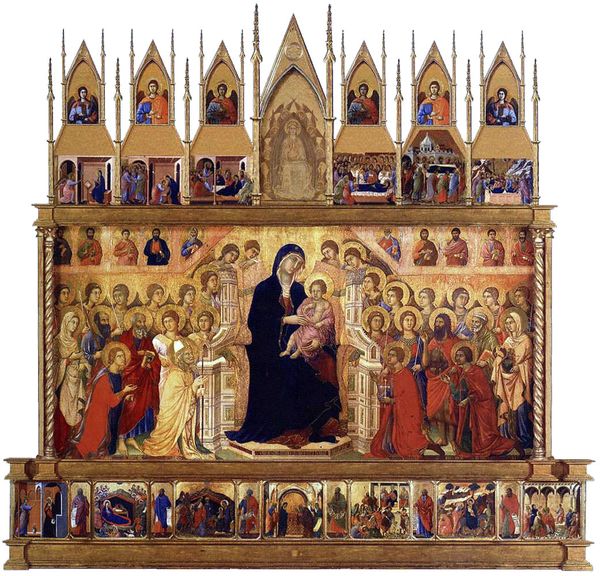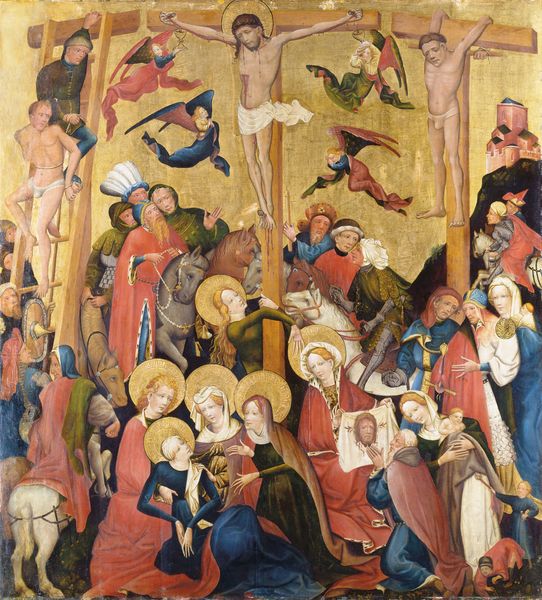
painting, oil-paint
#
portrait
#
painting
#
oil-paint
#
sculpture
#
holy-places
#
figuration
#
oil painting
#
christianity
#
history-painting
#
italian-renaissance
#
early-renaissance
#
christ
Copyright: Public domain
Curator: This is Carlo Crivelli's "Polyptych," dating back to approximately 1470. A remarkable example of Early Renaissance artistry, painted in oil. What strikes you most about this piece? Editor: Immediately, I'm drawn to the almost tactile quality of it, that glimmering gold leaf. You can practically feel the texture, the weight of those applied materials. What's the material composition contributing to our reading of it? Curator: Absolutely, the materiality speaks volumes. Think about the religious context, right? The gold isn't just decoration; it signifies divine light, opulence, power, and transcendence, really reflecting the church's own ambitions and dominance at the time. What could it have meant for different kinds of believers? Editor: Precisely, that shimmer was likely deeply aspirational and inspiring for working class populations. I'm curious about the methods of production; for example, look closely and there are these repeating punchwork patterns across each individual section; did Crivelli execute these, or were specialized artisans contracted out for this part? What could that mean? Curator: That’s such a compelling question, it prompts us to reconsider labor. Let’s explore the Madonna’s central position, in conversation with social roles of women at the time. Her idealized presentation contrasts the lived reality of many women within the society depicted here. What does it tell us about class and representation? Editor: Absolutely. And beyond representation, consider the sourcing of pigments: ultramarine from lapis lazuli, vermilion from cinnabar—the trade routes, the labor involved in extraction and refinement! I see not only the sacred in those hues but the very real economic foundations underpinning faith. Do you read a sense of stability in it, still? Curator: Not entirely. To me it serves more like a document of power. It solidifies hierarchies of wealth and holiness—offering, perhaps, an aesthetic balm for real social inequities. Editor: So it goes; as material conditions transform, so too must our perception and evaluation. Curator: Yes, as a tool to analyze and question assumptions related to social roles and historical events.
Comments
No comments
Be the first to comment and join the conversation on the ultimate creative platform.
